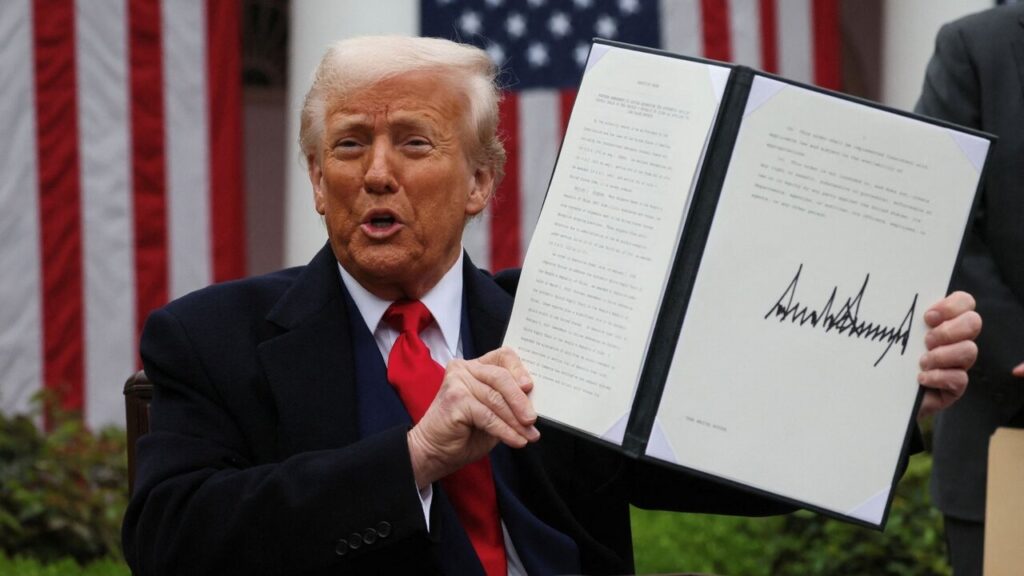BEIJING – A recent announcement by US President Donald Trump on new tariffs on China clearly suggests he is engaged in unrealistic and unrealistic plans.
On Wednesday, Trump announced a 54% tariff on all Chinese exports to the United States. With his announcement, the so-called “mutual” tariff of 34% has been added to the existing 20% obligation on all Chinese imports into the United States.
Since returning to the White House on January 20th, Trump has already imposed two tranches of 10% additional missions on all Chinese imports. Additional collection will come into effect on April 9th.
China has strongly condemned the new US tariffs.
“This violates WTO rules and undermines the system of multilateral trading based on the rules. China will firmly reject this and do what is necessary to defend our legitimate rights and interests.”
Guo said, “I have emphasized multiple times that there are no winners in trade and tariff wars. Protectionism is not connected anywhere. We encourage you to stop doing wrong and resolve the differences in trade with China and other countries through consultations with equality, respect and mutual interest.”
China’s Commerce Department also denounced Washington’s “unilateral bullying” practices.
“The so-called mutual tariffs determined by the United States on a subjective and unilateral assessment stand for, representing classic cases of unilateral bullying practices that violate international trade rules, seriously undermine the legitimate rights and interests of the parties involved,” the ministry said.
“China is firmly opposed to this and will take decisive steps to protect its own rights and interests. There is no winner in the trade war. There is no way for protectionism.”
Trump argues that these tariffs will allow the United States to flourish economically. He argues that it is necessary to address trade imbalances and protect American employment and manufacturing.
Playing cards in a wild goose chase
Trump launched a trade war with China more than two months ago when he returned to power. Trump’s trade conflict with China is actually rooted in his way of thinking and misconceptions about Asian countries.
It is clear that US tariffs on Chinese products will ultimately raise prices for American consumers. China has already responded to increasing US tariffs and import duties by up to 15%, covering many American agricultural products and foods. The United States has historically been vulnerable to China, which targets agricultural exports. Last year, China brought in $30 billion worth of agricultural products from the US. Without a doubt, Trump’s trade war works to undermine American farmers.
But this is just the tip of the iceberg for the United States.
As an Iranian journalist and representative of the Tehran era, I have been in China since February 24th as part of a media exchange initiative that continues until July. While here I toured many Chinese companies in both Beijing and Hainan, gaining direct insights into China’s important advances, particularly in the technology sector. From my observations and experience on the ground, it is abundantly clear that the US trade war and tariffs on China correspond to the pursuit of wild geese.
Trump’s tariffs could have a negative impact on China’s manufacturing industry. However, it is unlikely to effectively stop or replace it easily. China’s trade ties with Southeast Asia, Latin America and Europe are expanding, allowing them to discover new markets for export.
Similarly, manufacturing facilities in China have the ability to reduce costs and produce high-quality technologies in large quantities. China focuses on cutting-edge technologies such as robotics and artificial intelligence (AI), which have been of great interest to Washington, from apparel and footwear production.
China’s high-tech smarts, especially robotics and AI, dodge tariff bullets by turning tables. Robots are changing the game. They make the factory faster and cheaper. AI is more than just a buzzword. It gives Chinese companies an advantage. They use it to create better products and run their business smarter. This will help China to prevent tariff pain.
China’s technological advances are reshaping the global landscape. China has emerged as a major force in robotics, artificial intelligence, 5G technology and electric vehicles. These developments force Trump to bite a bullet and seek to resolve the trade dispute with Beijing through diplomatic debate.

